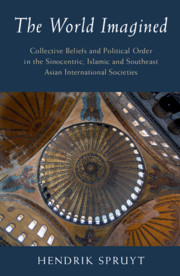 The World Imagined
The World Imagined Book contents
- The World Imagined
- LSE International Studies
- The World Imagined
- Copyright page
- Dedication
- Contents
- Figures
- Preface
- Acknowledgments
- A Note on Transliteration
- 1 Introduction
- Part I Beyond the Westphalian Gaze
- Part II The East Asian Sino-centric Order
- Part III The Islamic Cultural–Historical Community
- Part IV Collective Imagination among the Polities of Southeast Asia
- 8 The Galactic Polities of Southeast Asia
- 9 Interstate Relations and the Encounter with Colonial Powers
- 10 Conclusion
- Bibliography
- Index
8 - The Galactic Polities of Southeast Asia
from Part IV - Collective Imagination among the Polities of Southeast Asia
Published online by Cambridge University Press: 18 June 2020
- The World Imagined
- LSE International Studies
- The World Imagined
- Copyright page
- Dedication
- Contents
- Figures
- Preface
- Acknowledgments
- A Note on Transliteration
- 1 Introduction
- Part I Beyond the Westphalian Gaze
- Part II The East Asian Sino-centric Order
- Part III The Islamic Cultural–Historical Community
- Part IV Collective Imagination among the Polities of Southeast Asia
- 8 The Galactic Polities of Southeast Asia
- 9 Interstate Relations and the Encounter with Colonial Powers
- 10 Conclusion
- Bibliography
- Index
Summary
The “galactic empires” were never dominated by a single polity, nor was this region united by any monotheistic religion. Nevertheless, collective beliefs created a shared political and social order throughout Southeast Asia. This regional international society was based on the view that the social and political world should be constructed so as to mirror the religious and cosmological realm. Political authority radiated from a sacred political and geographic center, with authority dissipating concentrically from the center outward.
Keywords
- Type
- Chapter
- Information
- The World ImaginedCollective Beliefs and Political Order in the Sinocentric, Islamic and Southeast Asian International Societies, pp. 253 - 283Publisher: Cambridge University PressPrint publication year: 2020
